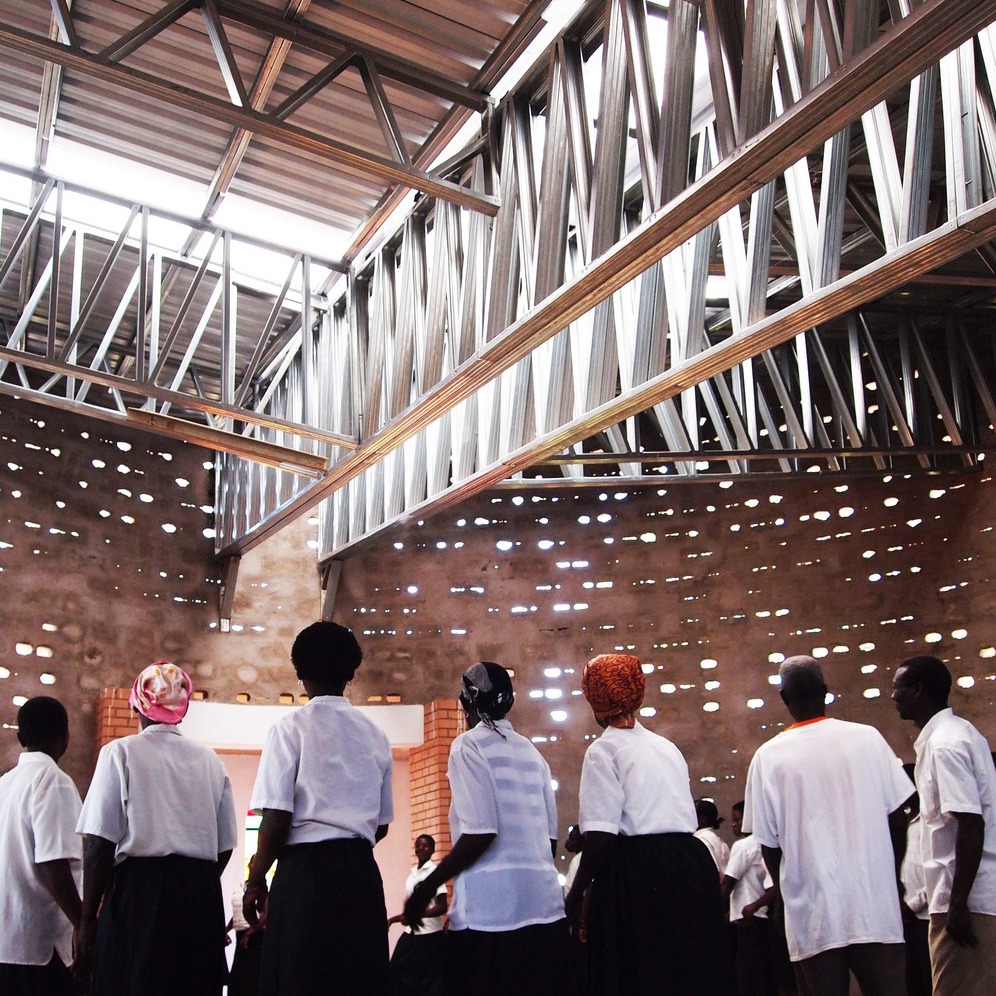We have found two striking examples of stunning contemporary ceramic architecture utilized as a means to bring community together in rural areas, both of which are cylindrical and strive to integrate with- and invite exploration of the environment surrounding them. First we’ll start with this beautiful church and community space in Malawi by Architecture for a Change (A4AC).
Architecture Team, Village Construct Community Space using Local Brick


Located in the Chimphamba village of Malawi, the building features an acoustic dream of a cylindrical building which also mirrors area symbols of safety and protection, the architecture team told ArchDaily.
Through our analysis of geometric shapes in the community it became evident that cylindrical forms resonate with safety and protection. The people of rural Malawi create cylindrical protection walls around small trees to protect them during initial growth from animals. Cylindrical bird / chicken coups are made from woven sticks. One of the most evident cylindrical shapes seen in the community is maze storage structures that the people store their harvest in.



Small openings in the cylindrical form serve not only to diffuse light inside the building, but also to ventilate the structure. The holes also serve as a special commemoration.
The light openings inside the wall was inspired by the previous church. The structure had many small holes in the decaying roof. Although this was not created intentionally, the resulted in small beams of light entering the space. This memory was replicated in the new church.



The building also features three tower-like tangental structures made from local brick off the main cylindrical form. The structures also ventilate the space.
The genesis of the project began when the building in which church-goers and community gatherers congregated began to fall apart, ArchDaily writes.
These types of public buildings are extremely important in rural communities, as they must facilitate regular community gatherings to discus important matters such as food security, community challenges etc. Along with the chiefs of the village, Youth of Malawi asked A4AC to design and manage the build of a new church / community hall.
The architecture team told ArchDaily, its main aim was to create a building that could be built and repaired by the community builders themselves.


Handmade Brick Observatory in Iran


We love this local observatory in the desert of Esfahak, Iran. Designed by ‘Workshop for Living Structures‘ students at The Contemporary Architects Association, the observatory consists of three concentric circles; the center-most circle is the highest one while the two others encompass a single person passageway leading to the center.
Interestingly, each brick of the middle ring was laid with a 45 degree rotation, DesignBoom writes, rendering a beautiful ornamentation (check the video below for full effect).
The contemporary architects association also fell victim to their own design while making the observatory — by building it inside-out, they were enclosed in a circular space where they were closed off to the external world.


Construction of the observatory caused quite some excitement as locals would come visit with offerings of refreshment to the builders, one team member told DesignBoom.
“The greens that we had, the lunches, the short afternoon naps, the tea, the laughter, the joy of discovering each other and ourselves. They all were needed just as much as the adobe bricks and mortar to build the observatory. Just as involved in the process.”


Check out this time-lapse video showing the planning and construction phases of the observatory.
Do you love or loathe these works of contemporary ceramic architecture from the worlds of contemporary ceramics and contemporary ceramic art? Let us know in the comments.


Add your valued opinion to this post.